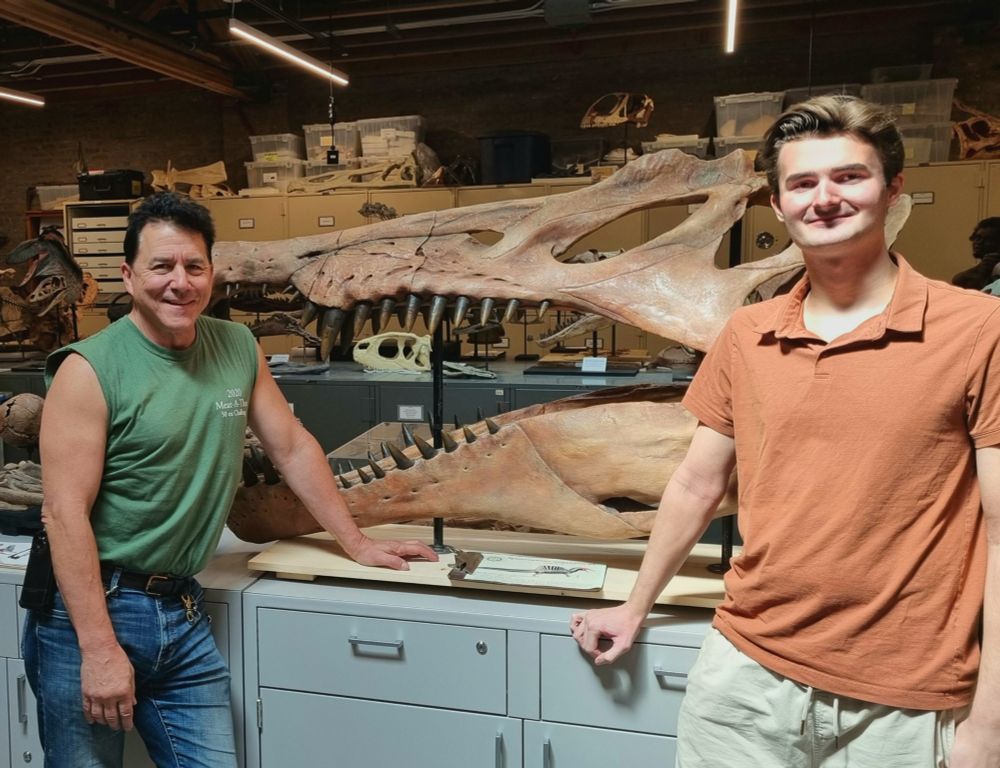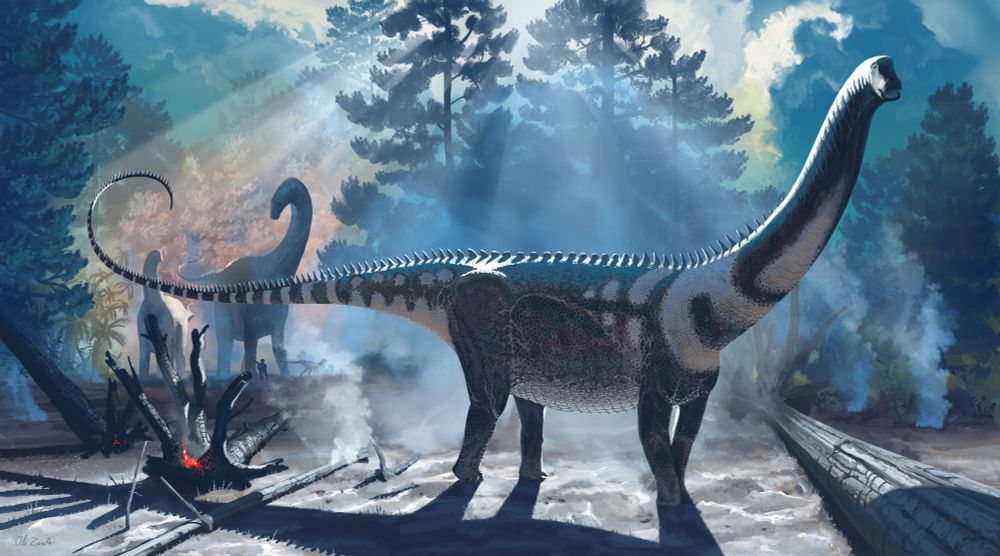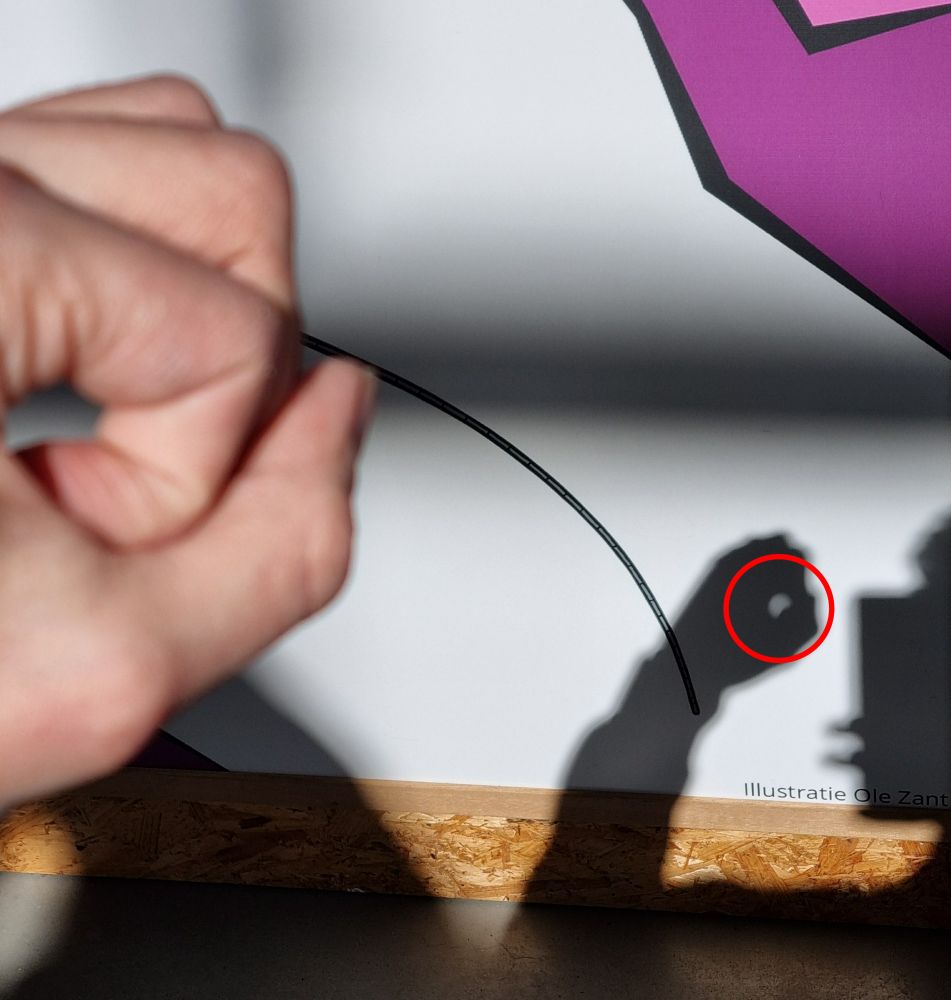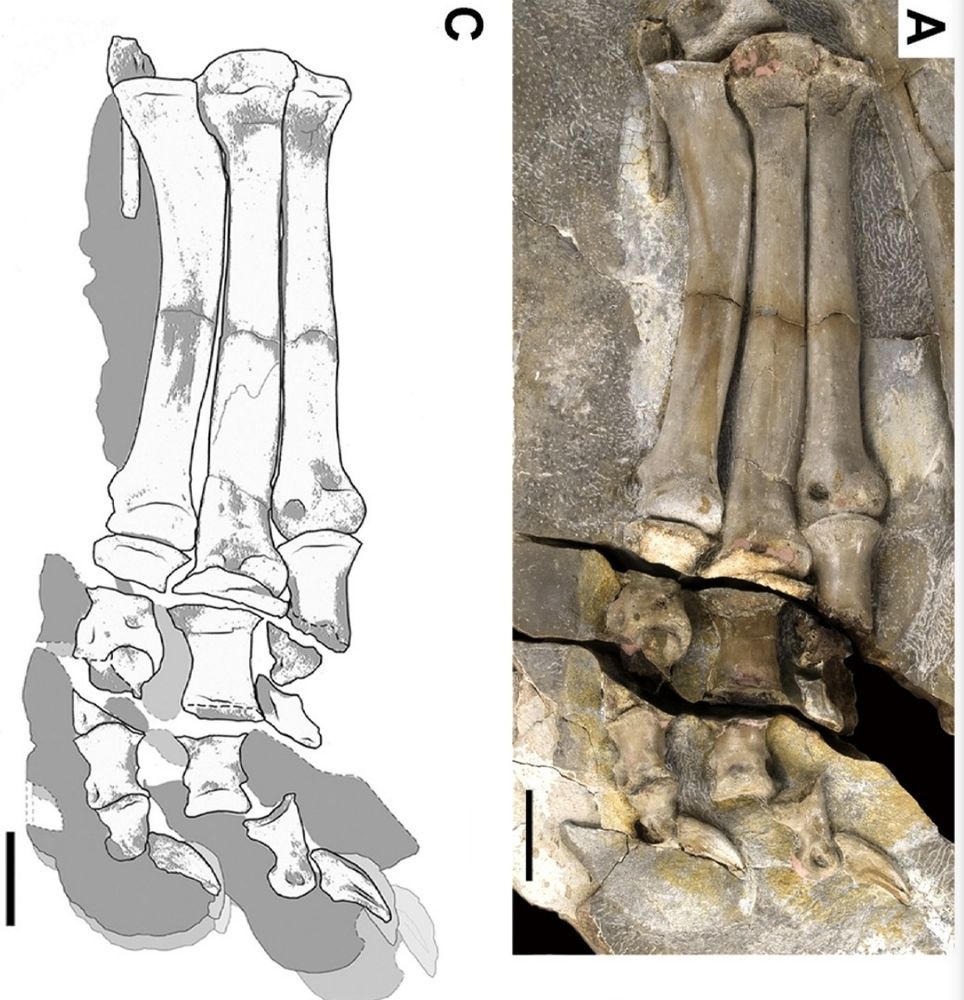Insgelijks!
07.10.2025 12:08 — 👍 1 🔁 0 💬 0 📌 0Ole Zant
@thebiobob.bsky.social
Scientific illustrator / Paleoartist. Museum fossil preparator and researcher. Admirer of theropods and Cretaceous Saharan Africa.
@thebiobob.bsky.social
Scientific illustrator / Paleoartist. Museum fossil preparator and researcher. Admirer of theropods and Cretaceous Saharan Africa.
Insgelijks!
07.10.2025 12:08 — 👍 1 🔁 0 💬 0 📌 0


A new diplodocid skeleton was unveiled today at the Provincial House of the Dutch Province of North Brabant!
It will be on display there for the rest of the month, until it returns to the Oertijdmuseum, which is where we originally prepared the skeleton.
#dinosaurs
It is 👀
One I'm getting to co-author even!
Thanks! There's more to come
29.09.2025 18:46 — 👍 2 🔁 0 💬 0 📌 0
I haven't been posting much. But that doesn't mean I haven't been drawing any dinosaurs. 👀
29.09.2025 18:12 — 👍 35 🔁 8 💬 4 📌 0
Two articles have already been published and like the rest are freely accessible to everyone.
The first two articles both feature art by me, including a skeletal and life reconstruction of Ardetosaurus viator, a new species first published in this volume.
palaeo-electronica.org/content/2024...
A new giant project on diplodocoids!
When finished, it will provide a look into the anatomy, diversity and phylogeny of these long necked dinosaurs.
They just started a crowd funding campain, so if you want to see this project realized consider donating.
experiment.com/projects/rea...

Paul Sereno (left) and Ole Zant (right) in the Fossil Lab. With a Spinosaurus aegyptiacus skull in the back.
I wrapped up a summer full of dinosaurs at Paul Sereno's Fossil Lab earlier this week. I had the privilege of working with a lot of great minds, on a lot of great projects.
31.08.2025 18:28 — 👍 23 🔁 4 💬 0 📌 0The vegetation still looks insanely good! 🌿 I can't imagine how long that took to draw though...
03.06.2025 08:40 — 👍 1 🔁 0 💬 1 📌 0Thanks! Those patterns were mostly inspired by leopards and genets. But also by monitor lizards.
09.04.2025 08:02 — 👍 1 🔁 0 💬 0 📌 0Thank you!
09.04.2025 08:00 — 👍 1 🔁 0 💬 0 📌 0



Hello #PortfolioDay!
I illustrate extinct animals and their environments.
Eerst eens kijken welk onderzoek ik volgende keer zou willen presenteren. Wie weet
05.04.2025 18:59 — 👍 1 🔁 0 💬 1 📌 0Haha dat niet helaas. Maar er waren dan ook veel goede posters
05.04.2025 18:55 — 👍 1 🔁 0 💬 1 📌 0Dankjewel! Was leuk
05.04.2025 18:51 — 👍 1 🔁 0 💬 1 📌 0
Presented a poster today on my research on mammals from a new Lancian microsite.
The poster is in Dutch but don't worry, I'm almost done with the paper which will feature significantly more material anyway.




Solar eclipse at the museum today
29.03.2025 11:33 — 👍 11 🔁 1 💬 0 📌 0Thanks! I hope I did them justice.
03.03.2025 10:00 — 👍 1 🔁 0 💬 0 📌 0Thank you! :)
03.03.2025 09:50 — 👍 3 🔁 0 💬 0 📌 0Thank you! The clouds took a lot of work but were definitely fun to do!
02.03.2025 16:07 — 👍 1 🔁 0 💬 0 📌 0

Here are the original sketches I made last year. At the time I didn't have the intention of turning them into a full illustration but here we are.
02.03.2025 13:57 — 👍 22 🔁 1 💬 0 📌 0The bone core of completer crests were recently discovered in Niger and have not yet been described. This reconstruction is not based on those specimens (in which case I would have made them even taller, especially as they were likely covered by a keratinous sheath).
02.03.2025 13:56 — 👍 13 🔁 0 💬 1 📌 0
Reconstruction by Tyler Keillor, Lauren Conroy, Erin Fitzgerald, Paul Sereno.

In case people are wondering about the crest: it is known that Spinosaurus had one, as the base of some have been found. Unfortunately no complete crests have been described, but seeing the extent of displays like the sail and tail, I find it likely the crest was quite prominent.
02.03.2025 13:55 — 👍 19 🔁 1 💬 1 📌 0When it comes to the presence or absence of lips there are valid arguments for both sides. I usually reconstruct them with lips but chose not to this time. Reasons include: interlocking teeth, teeth angling out labially, and tight skin covering on much of the snout.
02.03.2025 13:54 — 👍 14 🔁 0 💬 1 📌 0
Figure featuring cervical skin of Carnotaurus by Christophe Hendrickx and Phil Bell. https://doi.org/10.1016/j.cretres.2021.104994 Jacob Baardse claims to have sculpted the model, but I'm pretty sure he just 3D scanned a dead Carnotaurus found somewhere.

Concavenator (this figure and the following two figures) was described by Fransisco Ortega and collegues. https://doi.org/10.1038/nature09181


Caudal scales of Concavenator.
Scalation is based on other theropods. Wrinkly neck as in Carnotaurus. Larger scales on the feet and square scales in rows on the tail, as in Concavenator. Despite some filaments being preserved on the mostly scaly Juravenator, my Spinosaurus is mostly bald (except for one spot).
02.03.2025 13:54 — 👍 14 🔁 0 💬 1 📌 0

The skin around the snout sits quite tightly on the bone. As seen in vascular grooves, as well as bumps on the anterior portion of the maxilla which you can also see in my reconstruction.
02.03.2025 13:52 — 👍 15 🔁 0 💬 1 📌 0
Reconstruction from paper by Sereno and collegues. https://doi.org/10.7554/eLife.80092
The fragmentary nature of the specimens makes many aspects of Spinosaurus difficult to reconstruct. Depending on how the sail is reconstructed it may be M-shaped, or relatively round. The sail in my recontruction is mainly based on the reconstruction by Sereno and collegues.
02.03.2025 13:52 — 👍 15 🔁 0 💬 1 📌 0


Reconstruction of the cervical series of Spinosaurus based on isolated vertebrae. By Robert Smyth, Nizar Ibrahim and David Martill. Preserved bones in white. https://doi.org/10.1016/j.cretres.2020.104520
Many isolated Spinosaurus bones were also found in Morocco. These revealed that Spinosaurus possessed a long flexible neck and a snout with a large notch to ensnare prey such as large fish.
02.03.2025 13:51 — 👍 16 🔁 0 💬 1 📌 0



Skeletal reconstruction by Marco Auditore. Preserved bones in orange. For specimen see: https://doi.org/10.1126/science.1258750 https://doi.org/10.1038/s41586-020-2190-3
A century later a similar partial skeleton was uncovered in Morocco. Work on this specimen is still ongoing but it expanded our understanding of the animal in that it preserved very short hindlimbs and a tall (and very long) tail.
02.03.2025 13:50 — 👍 15 🔁 1 💬 1 📌 0



Per usual I'll post the fossils and reasoning behind my reconstruction in this thread.
Starting off with the history of discovery, the first Spinosaurus specimen was discovered during a German expedition in Egypt. The skeleton was eventually destroyed during a bombing in WWII.